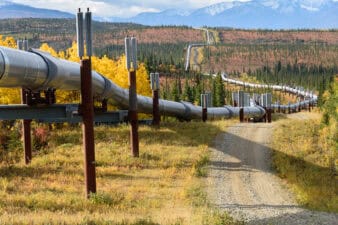Potash Corporation of Saskatchewan Inc. (TSX:POT)(NYSE:POT) has been a terrible performer lately.
The price of potash has performed poorly, like just about every other commodity over the last 18 months or so. Prices in North America, which have traditionally held up pretty well, are down close to 30% compared with last year. Analysts aren’t terribly bullish on 2016 either, predicting that prices for the commodity won’t head positive until 2017 at the earliest.
This weakness has hit the company in several ways. Revenue in the recently completed first quarter was US$1.2 billion, a huge decline from the US$1.7 billion posted in the same quarter a year ago. Net earnings experienced a similar crash, falling from US$370 million to US$75 million. That’s a drop from $0.44 per share all the way to $0.09.
The dividend also became a casualty, getting sliced from US$0.38 per share to US$0.25 per share. Because the share price has declined 47% over the last year, investors who get in today are still getting a yield of approximately 6% when converted back to Canadian dollars. That’s a nice yield, but investors need to keep in mind that additional dividend cuts may happen.
Analysts forecast the company will earn $1.19 per share this year, but those estimates have been slashed recently. Three months ago the consensus estimate from analysts was for earnings to be $1.54 per share. Management may decide debt repayment is a higher priority than dividends.
Potash investors everywhere are asking themselves one question: when will fertilizer prices recover? I, like everyone else, don’t know. But I think I can point to an indicator that matters more than the average person thinks.
Oil
Farmers on the prairies depend on the price of oil more than investors assume.
The reasoning is simple. Oil companies often lease a small portion of farms because there are attractive oil deposits underneath. Farmers love this arrangement because an oil company pays them generously to do nothing. The oil company does all the work of maintaining the site, all the farmer has to do is work around it.
I personally know farmers in both Alberta and Saskatchewan who were making more than $10,000 per year on a consistent basis from these leases.
As the price of oil has collapsed, these leases have disappeared. Oil derricks used to be a common site driving along highways in rural Alberta. These days, they’re few and far between.
This affects farmers in a very obvious way. If they have less revenue coming in, they have less to spend. Sure, there are plenty of farmers with deep pockets that can survive a few lean years. But there are many more who have either always been struggling or have just gotten back into the business. These folks have to cut back; they have no other choice.
Many farmers in the region are coming off a lean year. Dry conditions in many areas affected crop yields in 2015, and 2016 is even dryer. We’re still early in the year, but many of the farmers I know are worried.
The long term
Potash doesn’t look like a good stock, at least in the short term. It could be a different story over the next five to 10 years.
Potash is the largest producer in the world, accounting for about 20% of production. It just completed a big expansion, and its mines are relatively low cost. Today’s low prices should also discourage any expansion from competitors, which should bode well for long-term prices.
Right now, Potash isn’t in a good spot. But the company is well equipped to do well the next time the price of fertilizer spikes. Nobody knows when exactly that will happen, but the price of oil could end up giving us some big hints.
 Stock Up Sale
Stock Up Sale







